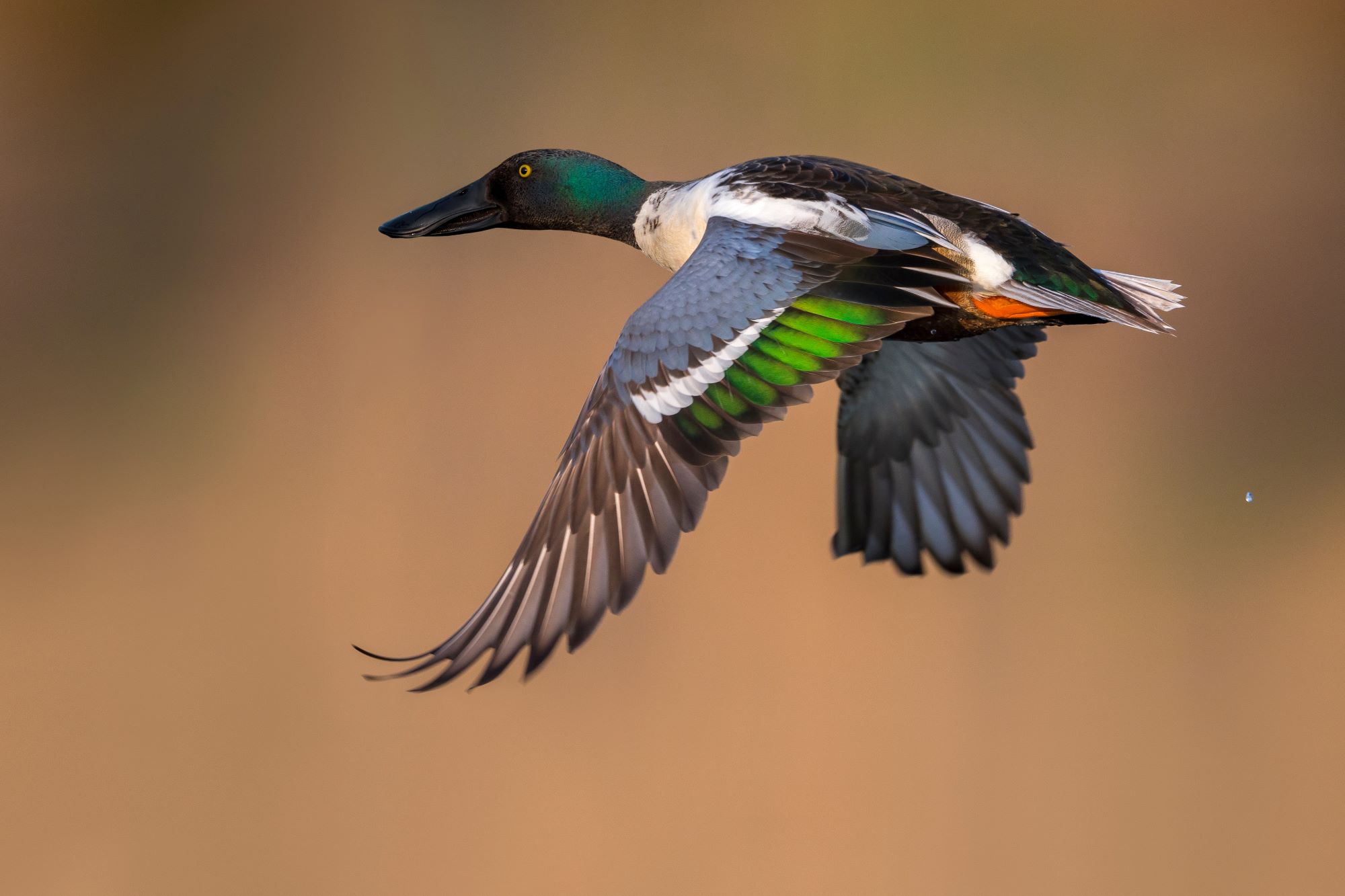
Northern Shovelers in Utah
Northern Shovelers, distinguished by their unique bill shape, are a notable feature in Utah's birdlife, present in the state year-round. These ducks, with their large, spatulate bills, are adapted to filter feed on the surface of the water. Males in breeding plumage are striking with bright green heads, white chests, and chestnut flanks, while females and non-breeding males are mottled brown, blending seamlessly into their marshy habitats. In Utah, Northern Shovelers frequent a variety of wetland environments, from the expansive freshwater marshes surrounding the Great Salt Lake to smaller ponds and lakes throughout the state. These habitats provide the ideal conditions for their feeding and nesting needs.
The feeding behavior of Northern Shovelers is one of their most fascinating characteristics. They are surface feeders, using their uniquely shaped bills to sift through the water, filtering out small aquatic invertebrates, plankton, and seeds. In Utah's wetlands, they are often seen moving in tight circles, creating whirlpools that bring food to the surface, making it easier to filter and consume. This efficient feeding strategy allows them to thrive in the nutrient-rich waters of Utah's wetlands, playing a crucial role in the ecosystem by controlling insect populations and aiding in the dispersal of aquatic plant seeds.
As year-round residents, Northern Shovelers are an integral part of Utah's avian community. They breed in the marshes and wetlands across the state, with the female constructing a well-hidden nest on the ground amidst dense vegetation. The clutch typically consists of 9 to 12 eggs, which are incubated for about three weeks. Once hatched, the precocial ducklings are led to water by their mother, where they quickly learn to forage, developing the skills necessary for survival.
Conservation of wetland habitats is vital for the wellbeing of Northern Shovelers in Utah. These environments are not only crucial for their feeding and breeding but also provide essential resting areas for migratory populations. Threats to wetland habitats, such as development, pollution, and water diversion, can significantly impact the Northern Shoveler population. Efforts to protect and restore these wetlands are essential in maintaining healthy populations of Northern Shovelers, as well as supporting the diversity of other wildlife species dependent on these ecosystems.
For birdwatchers and nature lovers in Utah, Northern Shovelers provide a year-round opportunity to observe and appreciate one of the state's most distinctive waterfowl species. Their presence in Utah's wetlands enhances the biodiversity of these areas, offering a glimpse into the complex interactions within aquatic ecosystems. Observing Northern Shovelers, whether in their elegant breeding plumage or as part of the bustling activity of a wetland community, is a reminder of the richness and diversity of Utah's natural habitats.